|
Daily we human being are catching various stimuli with
the five senses, sight, hearing, smell, taste, touch. Mainly
the sense of hearing which handles sound, and music, and
compound field is set as a research target.
Why Music? The answer to this question:
- Music has logical foundations
* suitable for computer
- Music has also non-logical aspects
*a new frontier of Kansei information
processing
- One music rather than a thousand of documents
Technology requirement for computer music processing is
also very high, for example, it needs physical + semantic
+ Kansei information processing, Universality + Individuality,
Objective and Subjective Evaluation/Performance, and Real-time
system technology.
So why not music!?
It aims the elucidation and construction toward media such
as the sound, music which usually touches each other casually.
Nultimedia system which became indispensable with internet,
by using the computer in the peculiar point of view.
Adjunct Researcher
Mitsuharu Matsumoto
Graduate Student
Tomoaki Aizawa
Undergraduate Student
|
|
|
An acoustical array combining microphones and piezoelectric devices

This study aims to reduce the internal noise from the system inside by the acoustical array combining microphones and piezoelectric devices. The proposed acoustical array can reduce the noise effectively because the piezoelectric devices can directly detect the object vibration.
|
|
| Time-Frequency epsilon-filter
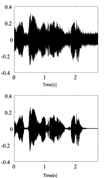 We propose the method applying epsilon-filter to the signal in the time-frequency domain. Although epsilon-filter cannot reduce the large amplitude noise, the proposed method can reduce it. Experimental results are given to demonstrate the performance of the proposed methods in comparison to the results of some conventional methods. We propose the method applying epsilon-filter to the signal in the time-frequency domain. Although epsilon-filter cannot reduce the large amplitude noise, the proposed method can reduce it. Experimental results are given to demonstrate the performance of the proposed methods in comparison to the results of some conventional methods.
|
|
| Session System Using Melodic Refrain Tracking
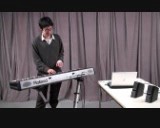
A musical session system which enables human player to play session with virtual player. When human player plays melodic refrain in time with the beat, virtual player recognizes cycle of melodic refrain and synchronized them in term of pitch and timing.
|
|
| Single-channel sound separation of speech signal
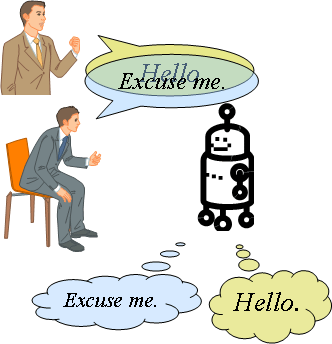
We propose a single-channel sound separation method by peak tracking. This method has two advantages compared to the other existing methods. First, this method can handle a sound with frequency fluctuation by tracking frequency peaks along time axis. Second, this method can separate the sounds whose frequency bins overlap by similarity of the power change ratios of same sounds.
|
|
| the system of understanding ambiguous utterance intension
in electric household appliances
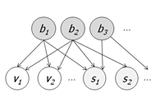
We proposes the system that can understand ambiguity of human behavior.We applied Bayesian Network to the system of controling electric household appliances, and make it possible to estimate the intension of user's ambiguous utterance by using past behavior and speech infomation.
|
|
| A Session which can exchange the initiative of the performance autonomously
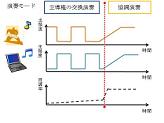
We propose the system that can measure the climax of the performance among humans and computers. The music session system which we developed can play to exchange the initiative of the performance and to cooperate with exciting each player duaring the
performance.
|
|
|